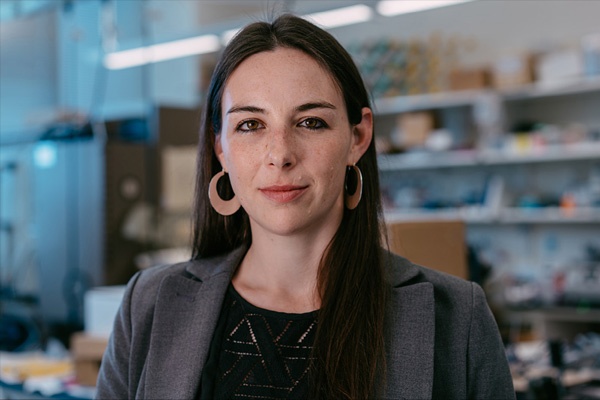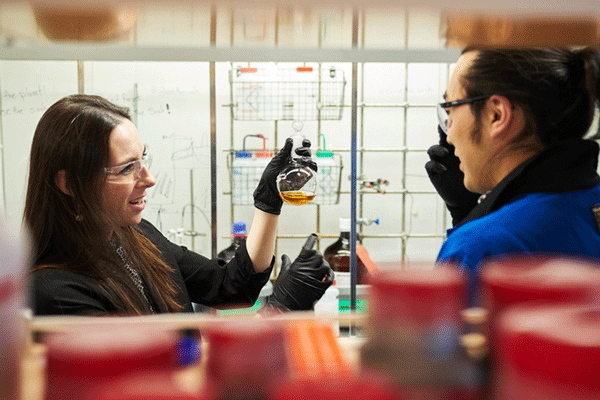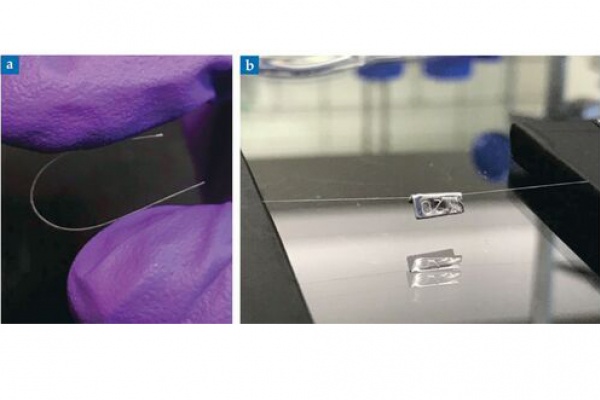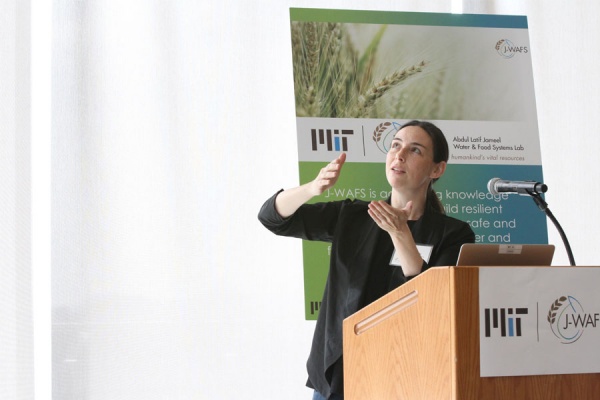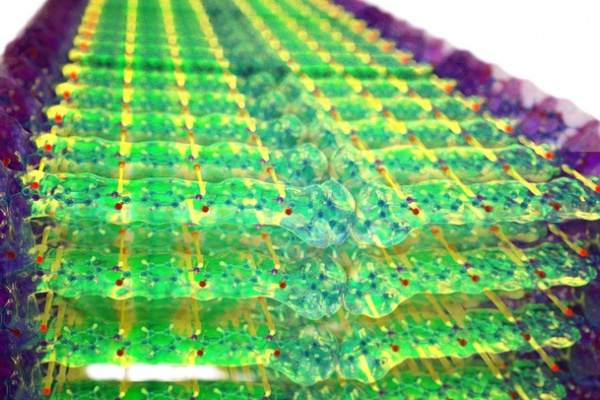Our Research Supermolecular nanostructure gels for chelation of arsenic from drinking water

Image credit: Ortony research team
Principal Investigator
Julia Ortony
- Finmeccanica Career Development Professor (formerly, has since left MIT)
- Department of Materials Science and Engineering
Prof. Ortony completed her Ph.D. at U.C. Santa Barbara in 2011, where she developed instrumentation based on electron paramagnetic resonance (EPR) spectroscopy for measuring the motion of water on molecular length scales in soft matter. Following her Ph.D., Prof. Ortony worked on dynamics characterization of supramolecular materials in Sam Stupp’s group at Northwestern. Prof. Ortony joined the faculty of MIT’s Department of Materials Science and Engineering in November 2015. Her group focuses on design, synthesis, and characterization of largely non-biological small molecules that spontaneously self-assemble in water, and on their applications.
Challenge:
Can a supermolecular nanostructure gel be designed that is capable of chelating arsenic from drinking water?
Research Strategy
- Develop small molecule-based nanofibers that are capable of chelating arsenic in both forms (arsenic acid and arsenous acid) with high binding affinity
- Understand the relationship between nanofiber surface chemistry and gelation
- Develop gel-based nanofiber chelating gels
- Create nanofiber chelation prototype for point-of-use removal of arsenic from drinking water
Project description
Arsenic contamination is a significant challenge across the globe and particularly in South Asia, where large populations are chronically exposed to dangerous concentrations due to their reliance on groundwater contaminated by naturally occurring arsenic.
Julia Ortony, the Finmeccanica Career Development Assistant Professor of Engineering in the Department of Materials Science and Engineering, is seeking a solution to arsenic contamination by developing a new and long-lasting filtration material. Her lab develops molecular nanomaterials for environmental contaminant remediation. A J-WAFS seed grant is supporting her development of a robust, high surface-area material made of small molecules designed to sequester arsenic from drinking water.
Outcomes
- Synthesized mechanically robust nanofibers with 5nm diameters and tunable surface charges that are stable in and out of water
- Tested chelation of arsenic compounds and lead against the nanofibers in solution, gel, and in the solid state
- Identified two molecular structures that self-assemble into nanofibers suitable for the removal of lead up to 1/10th of the nanofibers’ weight and stability even in extreme environmental conditions
- Optimized nanofiber surface chemistry to increase lead remediation, offering learnings to enhance heavy metal removal from contaminated water across material classes
Publications
Effects of molecular flexibility and head group repulsion on aramid amphiphile self-assembly
Samuel J. Kaser, Andrew J. Lew, Dae-Yoon Kim, Ty Christoff-Tempesta, Yukio Cho, and Julia H. Ortony, Molecular Systems Design & Engineering, 2021
Dynamics in supramolecular nanomaterials
Yukio Cho, Ty Christoff-Tempesta, Samuel J. Kaser, and Julia H. Ortony, Royal Society of Chemistry, 2021
Emerging investigator series: aramid amphiphile nanoribbons for the remediation of lead from contaminated water
Ty Christoff-Tempesta and Julia H. Ortony, Environmental Science: Nano, 2021
Morphological transitions of a photoswitchable aramid amphiphile nanostructure
Dae-Yoon Kim, Ty Christoff-Tempesta, Guillaume Lamour, Xiaobing Zuo, Ki-Hyun Ryu, and Julia H. Ortony, Nano Letters, 2021
News
Additional Details
Impact Areas
- Water
Research Themes
- Water Purification & Desalination
- Technology & Commercialization
- Equity & Access
Year Funded
- 2018
Grant Type
- Seed Grant
Status
- Completed

